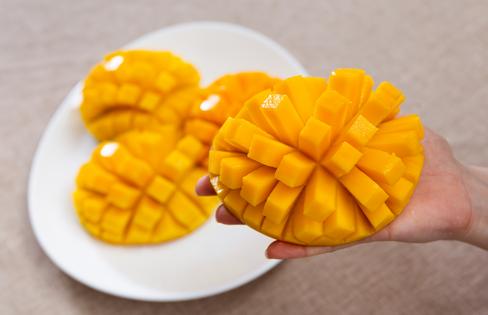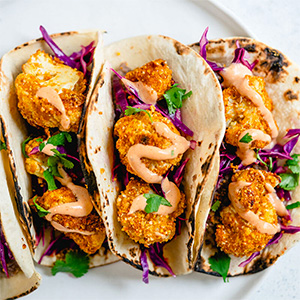Environmental Nutrition: Marvelous mangos
The mango fruit is the essence of tropical. Shades of red, orange, yellow, and green surround sunny flesh that may be soft and sweet or crisp and tart.
The folklore
Known as the “king of fruits,” this global gem originated in India more than 4,000 years ago and is the national fruit of India, Pakistan, and the Philippines, and the national tree of Bangladesh. Just as popular today, mangos are a staple on menus and ingredient lists in restaurants and markets. Not only do they taste great, they contain a variety of health promoting nutrients to support a balanced diet.
The facts
The mango (Mangiferi indica) is part of the same family as cashews, pistachios, sumac, poison ivy, and poison oak. Some people with allergies to these plants may also be allergic to mangos or mango skin. Mangos are a stone fruit, which means they have a large seed in the middle of their flesh. There are hundreds of mango varieties, including the popular Tommy Atkins, Honey, and Haden, which range in shades of color and scales of sweet, tart, and sour. One three-quarter cup serving provides half the recommended daily value of antioxidant vitamin C and 15% DV (DV=Daily Value, based on 2,000 calories/day) of folate, essential for cell function in the body.
The findings
Each part of mango fruit — skin, flesh and seed — contains many plant compounds with potential health protective properties. Preliminary studies have shown antioxidant, anticancer, and antidiabetic activities of mango fruits, linking them with a potential role in food products, supplements, and medications to help in the cure of diseases (Pharmaceuticals, 2023). A nutrient dense fruit, mango consumption is associated with better nutrient intake and better overall diet quality compared with non-mango consumers, according to a study in the journal (Nutrients, 2021).
The finer points
Fresh mangos are available year-round, but are best from May through August. Choose fresh mangos by feel. Ripe fruits give slightly when pressed gently, and an unripe mango is very firm. Mangos may be enjoyed at all stages with flavor ranging from ripe and sweet to firm and tart. Ripen mangos outside the refrigerator, or refrigerate to slow the ripening process. Prepare by cutting along either side of the long, flat seed. Peel away skin if preferred, and slice as desired. Mango is also available frozen, dried, and pickled. Enjoy mango on its own; diced into salsas, chutneys, salads, cereals and yogurt; pureed into smoothies, frozen desserts, baked goods, savory sauces and pilafs.
(Environmental Nutrition is the award-winning independent newsletter written by nutrition experts dedicated to providing readers up-to-date, accurate information about health and nutrition in clear, concise English. For more information, visit www.environmentalnutrition.com.)
©2025 Belvoir Media Group, LLC. Distributed by Tribune Content Agency, LLC.











Comments